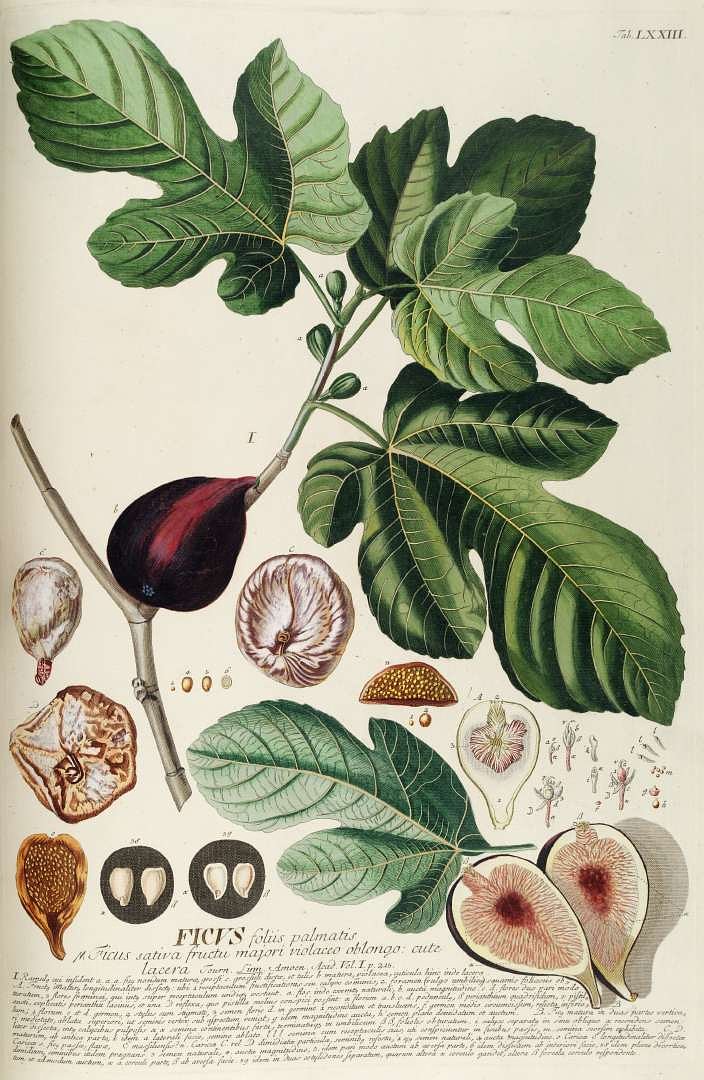The Algarve and The Fig
Nutritional values, origins, varieties and culinary use of this succulent fruit so popular in Algarve tradition

Posted on Fri 29 Oct 2021
In the 17th century, figs were still "the most reliable production you could count on" and "the Algarve's main wealth". Around 1607, Henrique Fernandes Sarrão referred to the many fig trees in Pêra and Alcantarilha and presented the Mexilhoeira da Carregação as the main port of export.
The commerce of the fig remained prosperous throughout the 19th century.In 1891 a partnership was even created for the export of figs from the Algarve, by a group of rich merchants of the region, including José Libânio Gomes, father of Manuel Teixeira Gomes. His family had an important commercial connection with foreign countries, exporting products to the Netherlands, Belgium and France. The partnership lasted only a few years, but other traders continued to develop the lucrative export activity.
According to data published by IROMA, during World War I (1914-18), the Algarve reached an average annual export of 8800 tons of figs. The municipality of Silves alone produced around 2500 tons. Until 1922, fig exports occupied first place in the external trade of dried and dehydrated fruits. Unfortunately the poor quality of many lots, due in large part to the attack of moths, caused exports to decline and it was more difficult to face competition from figs from Turkey.
In 1953, a new modality appeared in the fig trade, in the form of "paste", or industrial fig, which was exported mainly to the United States of America. The business of dried figs knew new breath, along with exports of almond and carob beans. The big dried fruit traders met in Faro, at the "Café Aliança", on Wednesdays and Saturdays, from 11am to 6pm, Mondays in S. Bartolomeu de Messines and Tuesdays in Loulé. At these meetings, prices and the urgency of the shipments were defined. One of the the most successful entrepreneur was Teófilo Fontainhas Neto, established in S. Bartolomeu de Messines and in the period between 1957 and 1970 was the 2nd largest exporter of figs.
Fig Origin and Varieties
Native to the Middle East, The Fig Has Endless Varieties
The strong grey trunk, the wide velvety leaves, the sticky itchy white milk resin that leaks from the cracked leaves, its round crimson fruits with their bellies filled with honeyed goodness. In my opinion, nothing beats a fig tree. There are about 75o varieties around the world, and the fig was one of the earliest fruit trees to be cultivated, and its cultivation spread in remote ages over all the districts around the Aegean Sea and throughout the Levant.
The Spartans especially used it at their public tables. Pliny the Elder enumerated many varieties and described those of home growth as furnishing a large portion of the food of slaves. In Latin myth the fig was held sacred to Bacchus and employed in religious ceremonies; the fig tree that overshadowed the twin founders of Rome in the wolf’s cave was an emblem of the future prosperity of the race.
A in-depth invesrtigation regarding fig varieties and their adaptation to Algarve soil and climate, has been conducted between 2011 and 2014 in Tavira, by the CEAT (Centro de Experimentaçao Agraria de Tavira) resulting in a collection of high cultural and genetic value which at the moment totals about 97 varieties properly cared for and preserved. Today is possible to access this valuable information on the characteristics of the tree, leaves and fruits through this link: https://www.drapalgarve.gov.pt/images/destaques/Livro_WEB_Figueiras_1.pdf
The fig tree in the Algarve is part of the traditional orchard (O POMAR DO SEQUEIRO ALGARVIO) made up of scattered or associated trees (carob, almond and olive trees). For the fresh fig, the best and freshest soils are used, because they originate fruit of larger size. The trees are pruned carefully and, to obtain better fruit, it is used to put a string on the varieties that need "caprification" (this process, also called "putting a touch on the fig trees", consists in hanging a fig of another type of wild fig tree ("figo bravo"), where a pollinator insect develops to favour fecundation. For fresh consumption, the figs are harvested in the morning and packed in cane baskets lined with fig or vine leaves.
Drying Figs
For drying, the light figs are harvested from mid-August to the end of September, well ripe (with the stem twisted). They are placed in a sheltered place and exposed to the sun's rays on cane mats, which roll up during the night to protect them from humidity. Soon in the morning those that have reached the ideal state of drying are removed. Before packing, the figs are washed, dried and pressed.We repost a very interesting interview recorded in Loulé 5 years ago, as part of the Documentar Algarve project, a real resource for fans of Algarve traditions
Figs Nutritional Values
Its nutritive composition, in fresh, is perfectly comparable to that of other fruits mormally consumed in larger amounts. It has water and fat contents, energetic value and dosable sugars quite similar to those of KIWI. It provides roughly the same fibre and carbohydrate content as Golden Delicious apple or Williams pear. The caloric value is lower than that of the banana and similar to that of the Kiwi and apple. It has significant vitamin C contents, higher than those of melon, peaches and grapes, of the same level as tomatoes and pineapples, as well as vitamin B2, only exceeded by apricots.
Sources:
https://www.drapalgarve.gov.pt/images/destaques/Livro_WEB_Figueiras_1.pdf
https://tradicional.dgadr.gov.pt/pt/cat/frutos-frescos/303-figos-do-algarve
http://www.quintadofigueiral.pt/Quinta-do-Figueiral-História-dos-figos-no-Algarve/
https://www.sulinformacao.pt/2020/01/antes-do-tempo
